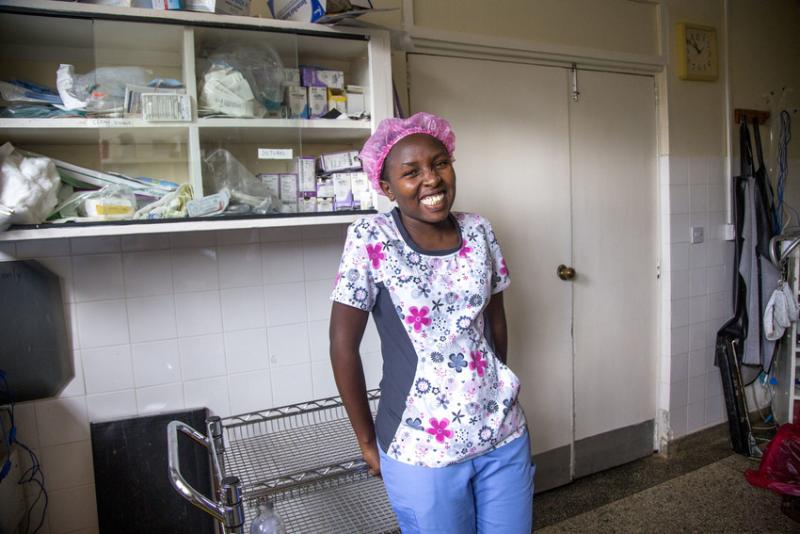Where We Work
See our interactive map


One of the over 9,330 students to receive low-interest loans through the Afya Elimu Fund. Photo by Georgina Goodwin for IntraHealth International.
Nearly 16,000 health workers in Kenya received updated training in HIV, maternal and child health, family planning, and other critical health areas, thanks to regional training hubs created by FUNZOKenya, a project funded by the US Agency for International Development and led by IntraHealth International.
The training hubs demonstrated a 38% increase in cost-efficiency over typical trainings by shifting the venues away from expensive hotels and hosting them instead at education institutions. The project established eight such hubs—networks of medical training institutions and hospitals that serve as clinical practice sites—in partnership with the Kenyan government to streamline in-service training for health workers during 2012–2016.
This is just one of the dramatic changes in health professional education and training systems that came about during FUNZOKenya’s five-year partnership with the government of Kenya. Together, they addressed the country’s chronic shortage of health workers and worked to ensure high-quality health care for the population. Funzo means training in Kiswahili, and the project, which ended in February, covered every aspect of the topic—from infrastructure and curricula improvements to quality assurance to helping needy students stay in school.
FUNZOKenya also:
Read more about FUNZOKenya’s results and recommendations.



